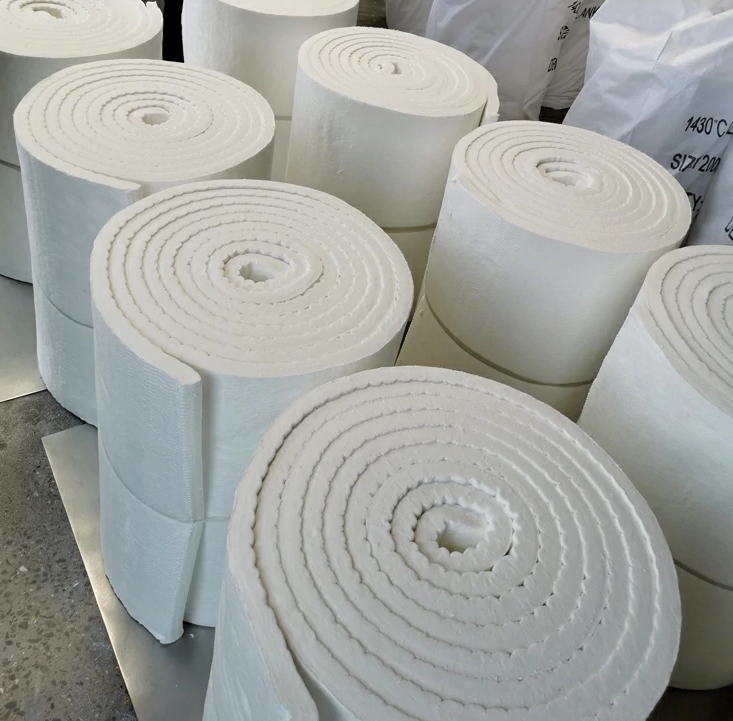High Thermal Resistance: Ceramic fiber blankets have excellent thermal insulation properties, minimizing heat loss from kilns and furnaces. By reducing heat transfer to the surroundings, they help maintain high temperatures inside the equipment more efficiently.
Minimized Radiation and Convection Losses: Ceramic fiber blanket create a barrier that prevents heat from escaping through radiation and convection. This significantly reduces heat loss to the surrounding environment, improving overall energy efficiency.
Effective Insulation in Thin Layers: Ceramic fiber blankets provide effective insulation even in thin layers, allowing for space-saving designs in industrial kilns and furnaces. This maximizes the internal space available for processing materials while still achieving optimal thermal performance.
Lower Thermal Mass: Ceramic fiber blankets have a low thermal mass, meaning they heat up quickly and require less energy to reach and maintain desired operating temperatures in kilns and furnaces. This reduces energy consumption and improves overall efficiency.
Ease of Installation: Ceramic fiber blankets are flexible and easy to cut, shape, and install around complex geometries and irregular surfaces in kilns and furnaces. This ensures complete coverage and minimizes thermal bridging, further enhancing insulation effectiveness.
Durability in High-Temperature Environments: Ceramic fiber blankets are highly resilient to thermal shock, meaning they can withstand rapid changes in temperature without cracking or deteriorating. This durability ensures long-term performance and energy savings in industrial applications.
Chemical Stability: Ceramic fiber blankets are chemically inert and resistant to most chemicals and corrosive substances encountered in industrial processes. This ensures their longevity and maintains insulation performance even in harsh operating conditions.
Enhanced Refractory System: Ceramic fiber blankets can be used in combination with traditional refractory materials to create a layered insulation system in kilns and furnaces. This approach improves overall insulation efficiency and extends the lifespan of refractory linings.
Recyclable and Eco-Friendly: Ceramic fiber blankets are typically made from natural materials like silica and alumina, making them recyclable and eco-friendly. Their sustainable properties align with green manufacturing practices and contribute to reducing the environmental impact of industrial operations.
Meeting Energy Efficiency Standards: By improving the energy efficiency of kilns and furnaces, ceramic fiber blankets help industries meet regulatory requirements and standards for energy conservation and emissions reduction. This ensures compliance with environmental regulations while optimizing operational costs.
In summary, ceramic fiber blankets improve the energy efficiency of industrial kilns and furnaces by providing superior thermal insulation, minimizing heat loss, offering space-saving designs, reducing energy consumption, ensuring durability in harsh environments, enhancing compatibility with refractory systems, promoting sustainability, and facilitating compliance with energy efficiency standards. Their widespread use in industrial applications contributes to cost savings, environmental sustainability, and improved operational efficiency.

Copyright:@2020-2021
Comments Please sign in or sign up to post.
0
0 of 500 characters used